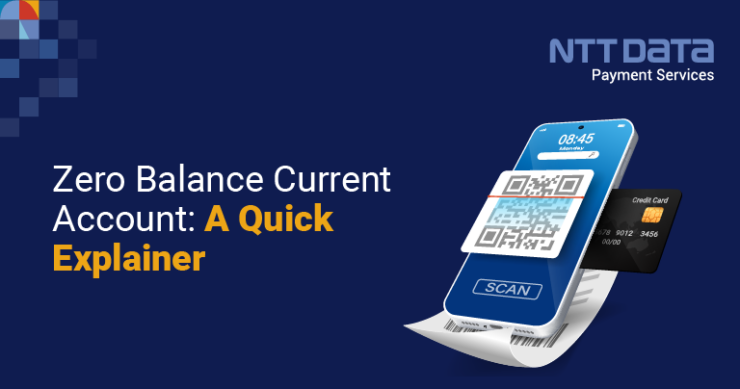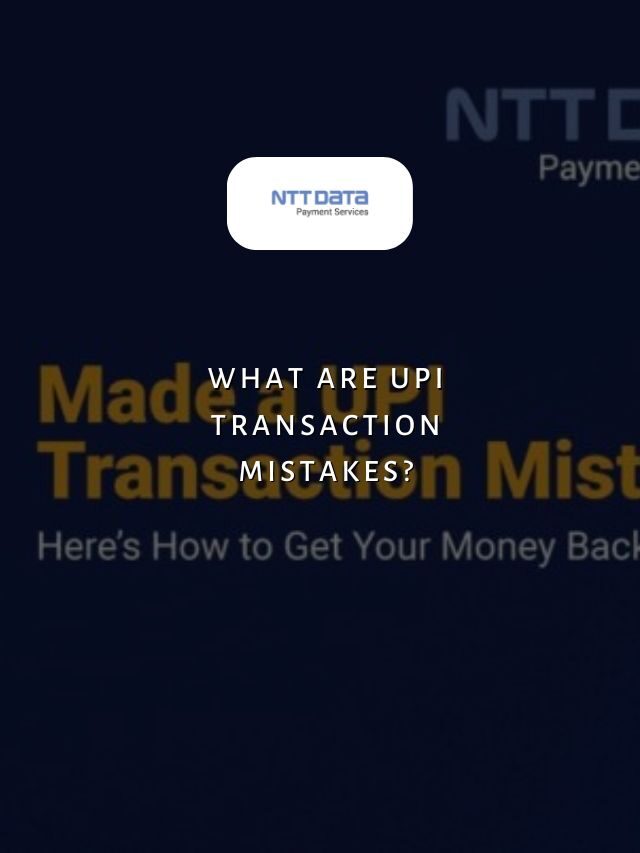
Table of Contents
- 1 What is a Zero Balance Current Account?
- 2 Recent Web Stories
- 3 What are the Benefits of a Zero Balance Account?
- 4 Who Can Open a Zero-Balance Account?
- 5 Does your Business Need a Zero Balance Current Account?
- 6 How to Open a Zero-Balance Account?
- 7 Enjoy Instant Payment Settlements with NTT DATA Payment Services
- 8 Conclusion
- 9 Frequently Asked Questions (FAQs)
A current account plays a vital role when managing finances for your business. They help in managing day-to-day transactions for both individuals and companies.
Among the various types of current accounts, the concept of a zero balance current account has gained significant attention. But what exactly is a zero balance current account, and how does it work?
This blog will discuss everything you need to know about a zero balance current account, exploring its features, benefits, and more. Whether you’re a business owner or an individual seeking financial flexibility, this blog will help you gain a more comprehensive understanding of this banking solution.
What is a Zero Balance Current Account?
A zero balance current account is a type of bank account in which the account holder is not required to maintain a minimum balance. A zero balance current account, as opposed to traditional current accounts with a minimum balance requirement, allows businesses and individuals to manage their accounts without worrying about maintaining a specific sum of funds.
This type of account is especially beneficial for small and medium-sized firms, startups, and individuals with fluctuating cash flows since it offers financial flexibility and reduces the risk of penalties for failing to meet the minimum balance requirements.
Recent Web Stories
What are the Benefits of a Zero Balance Account?
A zero balance account, also known as a zero balance current account, offers several benefits that make it an attractive option for individuals and businesses alike.
Here are some of the key advantages
1. No Minimum Balance Requirement
One of the basic perks of a zero-balance account is that it does not require a minimum balance. You can operate without worrying about maintaining a set amount with a zero-balance account.
2. Cost-Effective Solution
Generally, zero-balance accounts are less expensive than traditional current accounts, where monthly average balance (MAB) fines or penalties for not maintaining the required balance.
With a zero-balance account, you can avoid these charges and redirect your funds to more productive uses.
3. Easy Accessibility
Zero-balance accounts are often available through both traditional and digital banks, making them easily accessible to a wide spectrum of consumers. These accounts can be opened online or in person, offering convenience and flexibility.
4. Financial Inclusion
By enabling a wider range of people and businesses to access basic banking services, zero-balance accounts promote financial inclusion. It helps bridge the financial divide between the unbanked and the established financial system.
5. Transactional Facilities
You can use features such as checkbook issuing, debit cards, internet banking, mobile banking, and money transfers. This ensures that you can manage your day-to-day transactions efficiently and without constraints.
6. Additional Benefits
Several banks provide extra benefits and services along with zero-balance accounts. These may include preferential deposit interest rates, service discounts, personalized customer attention, and access to value-added services such as insurance and loans.
7. Ideal for Startups and Small Businesses
Zero-balance accounts are especially useful for startups and small businesses in their early stages with minimal financial resources. These accounts provide financial freedom while eliminating the hassle of maintaining a large minimum balance.
Who Can Open a Zero-Balance Account?
The eligibility criteria for opening a zero-balance account differs from one bank to another. However, anyone who is a resident of India and has a valid Aadhaar card is entitled to open a zero-balance account. You may also be required to show a PAN card by some banks.
These accounts are typically available to individuals and companies. Students, low-income individuals, self-employed individuals, and those unfamiliar with banking may benefit from a zero-balance account.
Businesses, startups, small businesses, and micro-entrepreneurs can also use these accounts to manage their day-to-day financial transactions.
Here are some of the banks that offer zero-balance accounts in India:
- State Bank of India (SBI)
- HDFC Bank
- ICICI Bank
- Axis Bank
- Kotak Mahindra Bank
- Punjab National Bank (PNB)
- Bank of Baroda
- Canara Bank
- Union Bank of India
- Indian Bank
Does your Business Need a Zero Balance Current Account?
A zero-balance current account might help companies with unpredictable cash flows or have trouble maintaining a minimum balance.
It provides financial freedom and simplicity by eliminating penalties for falling below a certain limit. These accounts frequently include online banking, personalized customer support, and customized transactional features.
However, consider your business’s needs, transaction volume, and associated fees before deciding. Compare offerings from different banks to find the best zero-balance current account that aligns with your goals and financial situation.
How to Open a Zero-Balance Account?
To open a zero-balance account, you will need to provide the following documents to the bank:
- Aadhaar card
- PAN card
- Proof of address
- Proof of identity
A zero-balance account can be opened online or in a bank branch. You must scan and upload the relevant documents to open an account online. If you open an account at a bank branch, you must have the necessary documentation.
Here are the steps on how to open a zero-balance account online
- Go to the bank’s website and select the “Open a Bank Account” option.
- Choose “Zero-Balance Account” from the options.
- Enter your personal information, such as your name, address, and phone number.
- Upload the necessary documents.
- Press the “Submit” button.
- The bank will verify your information and provide an account number and debit card.
Here are the steps on how to open a zero-balance account at a bank branch
- Go to a bank branch and request a form for setting up a zero-balance account.
- Fill out the form and submit it to the bank official.
- Provide the bank official with all the necessary documentation.
- The bank representative will verify your identity and address.
- The bank will open your account and issue you a debit card if your identity and address are verified.
Enjoy Instant Payment Settlements with NTT DATA Payment Services
With a zero-balance current account, you can easily manage your day-to-day financial transactions without the hassle of maintaining a minimum balance. This can lead to seamless transactions and greater financial flexibility.
NTT DATA Payment Services offers a complete payment solution to advance both your offline and online businesses from,
- Online Payment Gateway India
- POS machines
- IVR payments
- Mobile applications, and
- Bharat QR Scan and Pay
We ensure maximum comfort, convenience, and safety for all your payments.
| Also, you can get frequent updates on nttdatapayments Instagram |
Conclusion
A zero-balance current account is an innovative banking solution that has gained popularity among small businesses and startups due to its flexibility and cost-effectiveness.
By eliminating the need for maintaining a minimum balance, these accounts provide financial freedom and convenience to account holders. However, comparing different offerings from various banks and evaluating individual requirements is essential before opting for a zero-balance current account.
With the right choice, this account type can be a game-changer for businesses, simplifying their financial operations and helping them thrive.
Frequently Asked Questions (FAQs)
1. When did the zero-balance account start?
The Reserve Bank of India (RBI) established zero-balance accounts in India in 2005 to encourage financial inclusion. People can open bank accounts without having to maintain a certain minimum balance.
2. What is the rule of a zero-balance account?
A zero-balance account is a savings account that does not require a minimum balance. The account holder is free to operate the account without penalty for not maintaining a minimum balance.
3. How to open a zero-balance current account for startups?
You must present your business registration records, a PAN card, and address proof to open a zero-balance current account for startups. You can apply online or at a bank branch.







